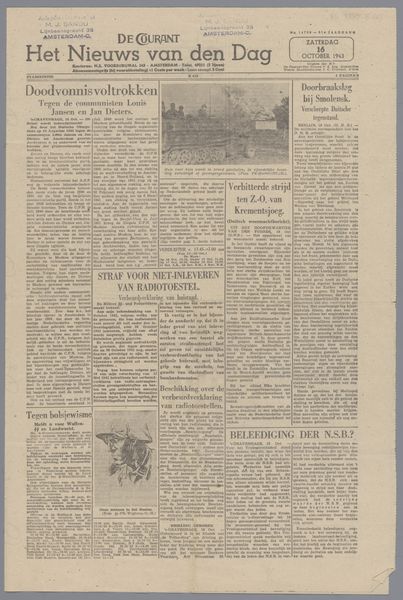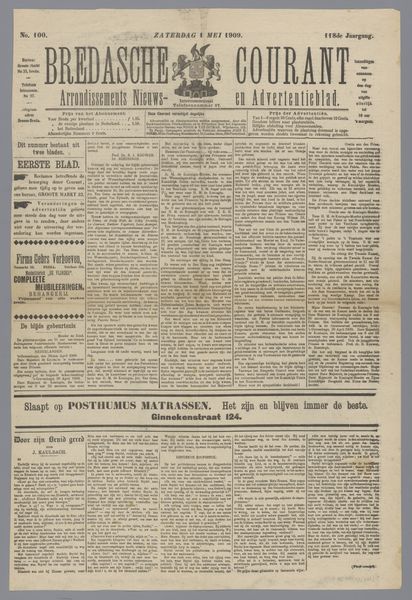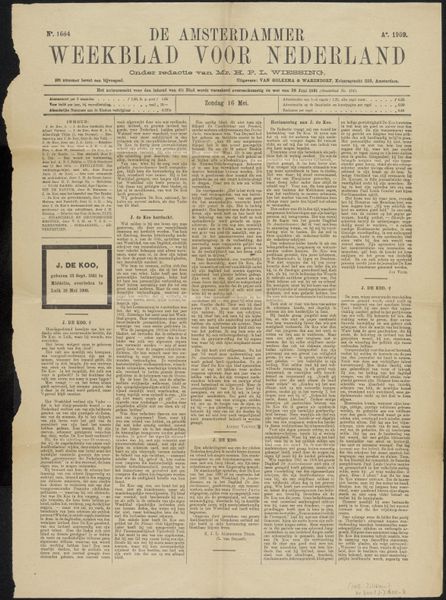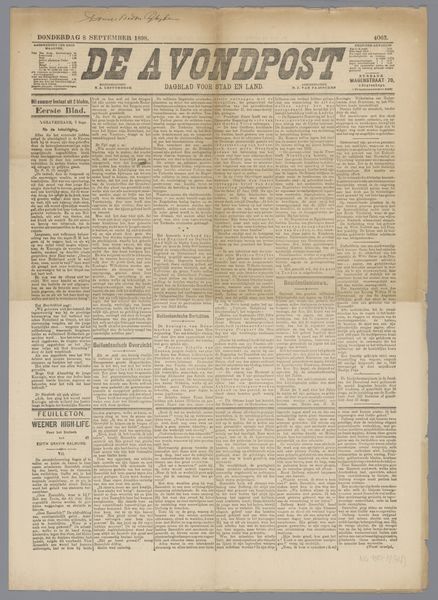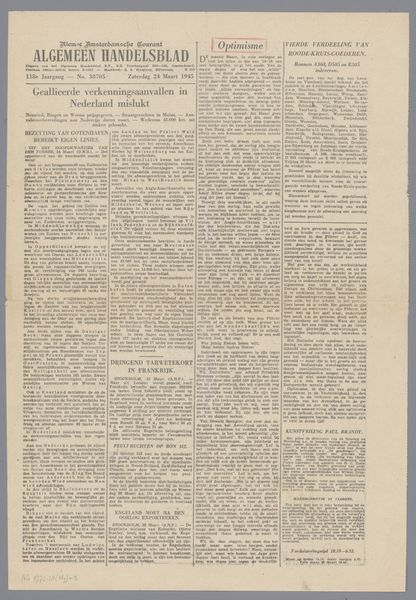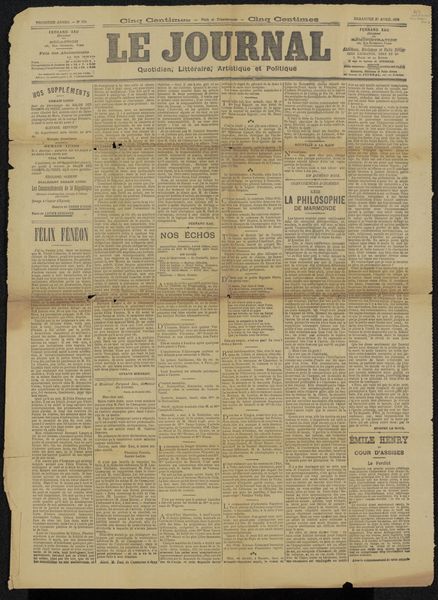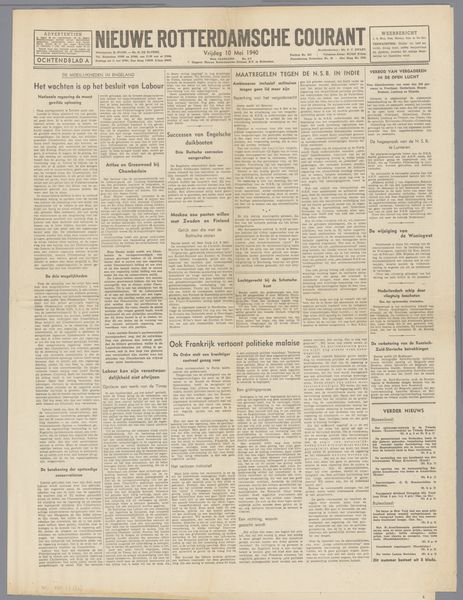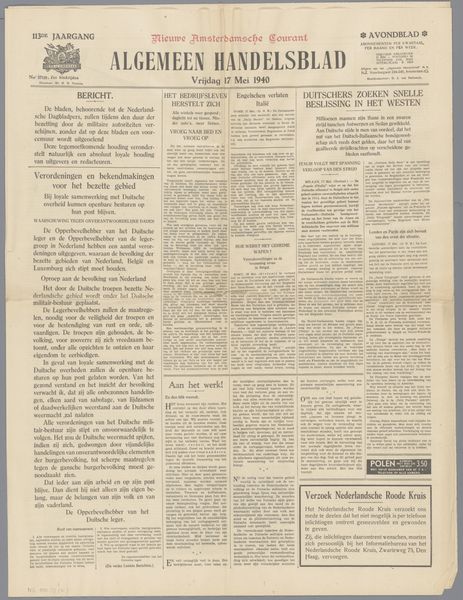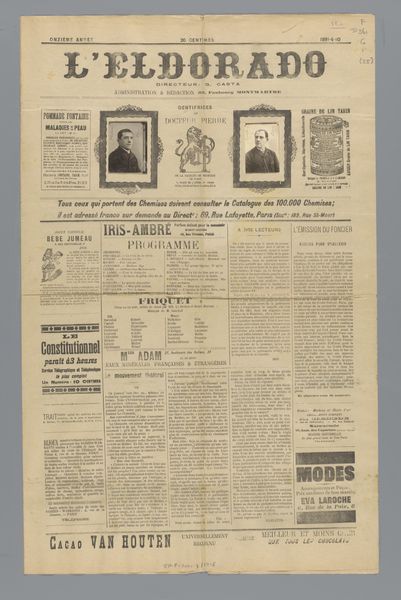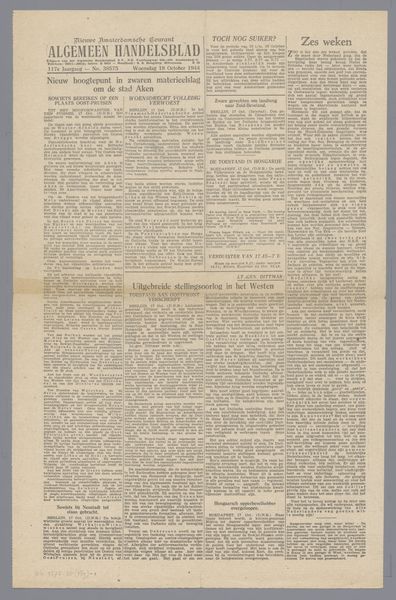
graphic-art, print, photography, poster
#
script typeface
#
graphic-art
#
newspaper
# print
#
small type
#
editorial typography
#
typographical layout
#
photography
#
paragraph style
#
journal
#
newspaper layout
#
cityscape
#
handwritten font
#
classical type
#
poster
#
modernism
Dimensions: height 60 cm, width 45 cm
Copyright: Rijks Museum: Open Domain
Curator: This is an incredibly evocative piece, isn't it? A broadsheet front page – *Algemeen Handelsblad*, dating probably from May 15th, 1940 – just days after the Nazi invasion of the Netherlands. Looking at this object as a material thing, how does the newspaper format itself inform our understanding? Editor: Well, there’s something haunting about it. I see the photograph right below the title - the Dam Square Royal Palace. It is stately, and looks as though nothing were amiss, in sharp contrast to the headlines below it in a much smaller typeface. How can the typography here shed some light on understanding this document? Curator: Precisely. Let’s consider the historical context. Paper, ink, printing presses – these are materials used to disseminate information, but also to shape public opinion, and record history as it unfolds. The image depicts calmness, while the newspaper headings such as "Enemy Action Must Cease Immediately", reflect social anxieties, hinting to a larger socio-political climate. Note also the visual hierarchy. Is it meant to be informative or persuasive? Editor: I see. So, the specific choices around font size and placement point to that agenda. This makes me think of how heavily newspapers, in general, rely on layout and accessibility, things we might not think about if we're simply reading for the news. But wouldn’t photography be regarded as an equally important source of information? Curator: True, but even photographs aren't neutral; they're carefully selected and cropped to convey a specific message. What were the constraints and capabilities of producing images and type at this time? These technologies weren’t universally available and their materiality impacted content. What are your thoughts now? Editor: I had not previously given consideration to such elements. Thinking about printing and photographic materials—ink, paper—it creates new considerations for understanding social influence. I'll look at media with fresh eyes going forward. Curator: Indeed! Paying attention to such details—the labor, production and material conditions of an object such as this broadsheet helps us develop a much more informed reading of that moment in history.
Comments
No comments
Be the first to comment and join the conversation on the ultimate creative platform.
